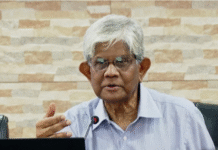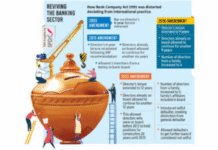Aon Hewitt, a US based human resource consultancy firm has identified Dhaka in a group of 10 worst business cities in the world. The study was carried out in terms of recruitment, employment and relocation prospects.
Of the 138 cities selected by Aon Hewitt — based on population size, rate of population growth, level of business investment and geographic spread among the cities covered — Dhaka came in at 130 of the People Risk Index.
The 2013 study measures the risks that organisations face with recruitment, employment and relocation in 138 cities worldwide by analysing factors as demographics, access to education, talent development, employment practices and government regulations.
The points in each category are tallied into a scale from 25 to 250, where 25 represent minimal or no risk and 250 extreme risks.
Dhaka scored 180, the same as Tripoli, and better than Karachi, Baghdad, Luanda (Angola), Port Moresby (Papua New Guinea), Addis Ababa (Ethiopia), Sana’a (Yemen) and Damascus.
The capital was among the top 10 highest risk cities for the employers last year as well, coming in at exactly the same spot in the index as this year.
It stood higher than Karachi at the previous edition’s rankings, too, while Phnom Penh, the capital of Cambodia, which tied with Dhaka, skipped three spots to 127 this year.
The lack of a stable and transparent government, the study said, is a major obstacle to implementing and enforcing business-friendly employment practices and investing in talent development initiatives in these cities.
“Furthermore, the lack of government investment in developing and improving the education and talent development infrastructure increases an employer’s risk in finding skilled talent, as the current infrastructure is unable to support employers’ workforce demands.”
Richard Payne, who was responsible for preparing the index, however, said there is a silver lining for the high-risk cities in the form of population growth in the next decade, which will increase the size of labour pool.
“However, if the education and talent development infrastructure do not improve, these cities will face a surplus of low-skilled workers and a shortage of highly educated professional talent.”
Despite the challenging business and people environment, organisations are still expressing interest in these high-risk locations due to the abundant natural resources and high economic growth potential, Payne added.
Meanwhile, the neighbouring India had nine of its cities in the index, occupying spots between 71 and 113.
Among the Indian cities, Mumbai scored the highest points, coming in at 71, while Jaipur the lowest, bagging the 113th position; the nearby city of Kolkata came in at 104.
Conversely, occupying the top five low-risk spots were New York, Singapore, Toronto, London and Montreal.
The Asian city of Hong Kong also featured among the ten lowest-risk countries — at 7 “Pro-business employment policies have a significant impact on people risk,” Payne said.
“Where government policies support a more flexible approach to talent immigration, employment practices and the provision of social welfare, these cities are able to attract and retain a talent supply critical for businesses.”
The results of the index are based on in-depth research conducted over a six-month period by Aon Hewitt’s Regional Talent & Rewards Analytics Centre in Singapore.
Data from more than 100 statistical sources provide the quantitative basis for the ratings, which were augmented by the assessment of Aon Hewitt’s local and regional human resources experts from around the world.
“Driven by a need to do more with less, business leaders have to be more innovative around how they invest; this has had an impact on how they think about talent sourcing and work force planning,” said Payne, also the Talent and Rewards practice leader for Aon Hewitt in Asia Pacific.
The index, Payne asserts, enables businesses to make informed decisions — to balance operational requirements with people risks.
Source: Weekly Holiday









